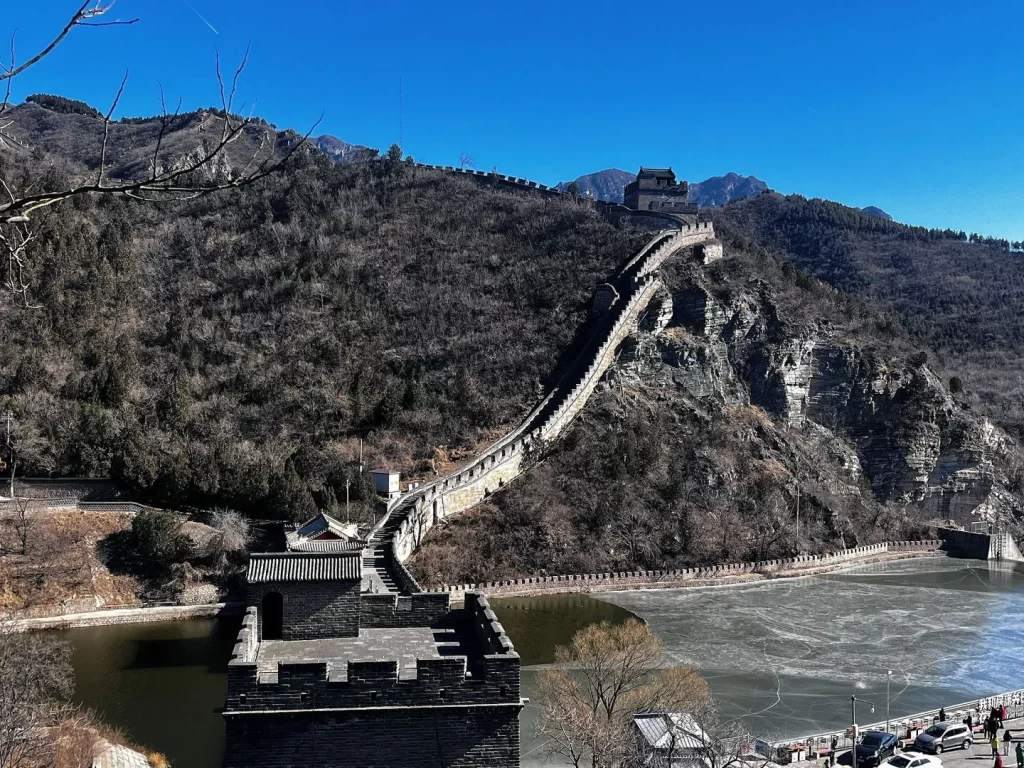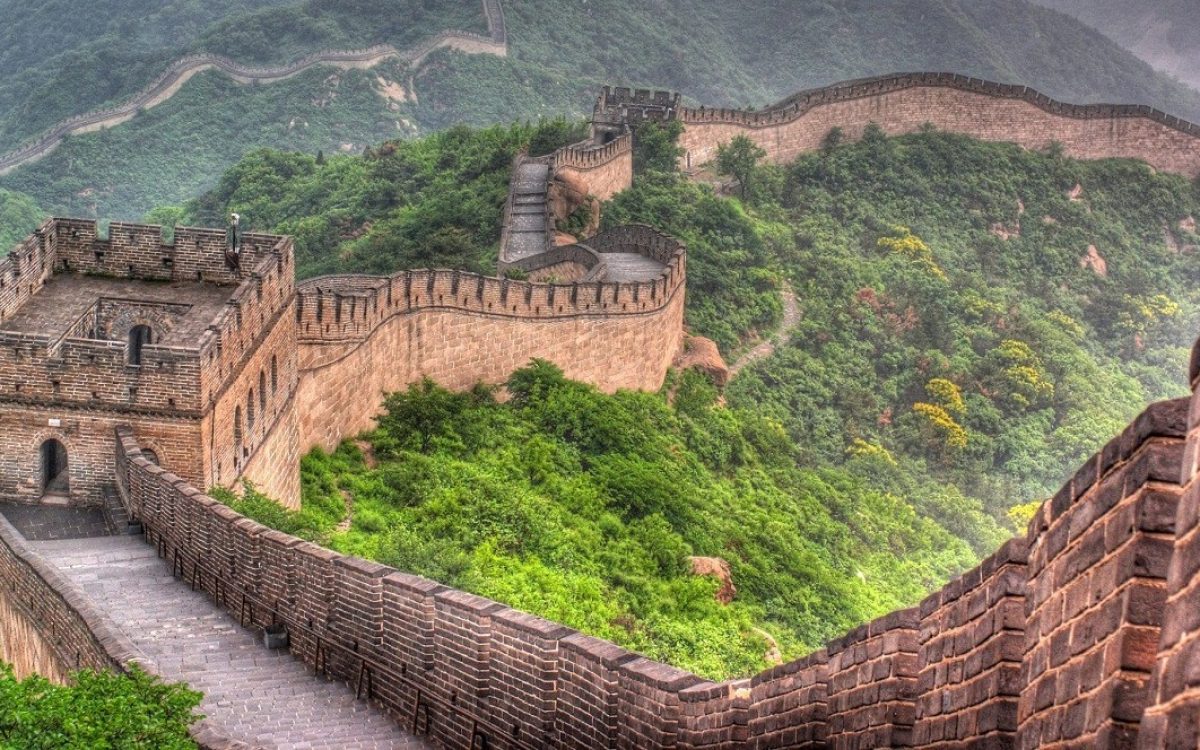The Great Wall of China is one of the most iconic historical landmarks in the world, with roots tracing back to ancient Chinese civilizations. It was built as a comprehensive defense system to protect the borders of the Chinese Empire from invaders and external attacks.
History of the Wall’s Construction:
- The earliest phases of the Great Wall’s construction date back to the 6th century BCE, when building began under the rule of the ancient states of “Zhou” and “Qin”. The Wall was later expanded and reinforced during the periods of the unified state and the dynasties of Han, Tang, and Sui. Since then, the Wall has undergone many modifications and renovations across different eras.
Engineering and Structure:
- The construction of the Great Wall of China is considered a great engineering achievement. A variety of materials were used, including stone, clay, brick, and wood. The wall ranges in height from 5 to 10 meters, and its width can reach two meters or more. The structure includes towers and watch posts used for surveillance and firing.

Historical and Cultural Role:
- Beyond its primary role in defense, the Great Wall stands as a symbol of China’s national identity and cultural heritage. It attracts millions of tourists annually who come to view and explore it. Many cultural events and celebrations are also held along the Wall.
Heritage Preservation:
- Despite its significance, the Wall faces challenges in heritage preservation due to natural and human factors such as erosion, pollution, and urban encroachment. Significant efforts are made by the Chinese government and international organizations to preserve this valuable heritage for future generations.
Why Was the Great Wall Built?
- The Great Wall was initially created as a fortress to defend against enemies and served as a barrier between four independent states before China was unified as one nation. Construction of the Wall began under the Qin Dynasty, but most of the structure we see today dates back to the Ming Dynasty.
The Great Wall as a Tourist Destination:
- Badaling is the most famous and visited section of the Great Wall. Transportation from Beijing to this northwest area is easily accessible. It features valleys covered with flowers and trees in the summer.
- This site is considered one of the most beautiful areas in China and was classified among the “Eight Great Sights of Yanqing” in the 13th century.
- To the west of Badaling lies a white marble structure known as the Cloud Platform (Yuntai), built in 1345 as a base for three pagoda towers. At the time, it was called the Bridge of Guojie Temple, but after being destroyed with the fall of the Yuan Dynasty, the Great Peace Temple was built in its place.
- This platform was burned down in 1702 during the reign of Emperor Kangxi. One of the key attractions along the Wall is the series of platforms spaced 300–500 meters apart.
- These platforms were built for patrol and guard purposes and served as observation centers, attack bases, and weapons storage sites. Beacon towers were also used to transmit military information.

How Long Is the Great Wall?
- The Great Wall of China is approximately 21,196.18 kilometers (13,170.7 miles) long. Although estimates of the Wall’s length have varied historically—from 2,414 km to 8,046 km—archaeological surveys conducted in 2012 by the Chinese government revealed the actual length. It is the longest wall ever built in history and one of the most important tourist landmarks in the world.
Most Famous Sections of the Great Wall:
Beijing serves as a major gateway to the Great Wall, encompassing many of its most famous sections within its outskirts, including:
- Badaling: The most popular and visited section, often crowded with tourists.
- Juyongguan Pass: Located near Badaling, it contains one of the three mountain passes of the Great Wall and is also heavily visited.
- Mutianyu: Close to the previous sections, this part offers stunning views of the Wall and surrounding hills. Its slopes allow visitors to walk down from the top to the lower areas and is generally less crowded.
- Jinshanling: Located outside of Beijing, this section is considered one of the most scenic and requires around two and a half hours of driving to reach.

Other notable sections include Jiayuguan, Jiankou, Simatai, and Shanhaiguan, each offering a unique experience of the Great Wall.
Key Facts About the Great Wall of China:
- Historically, the Chinese did not refer to it as the “Great Wall” as the rest of the world does. Instead, they called it names like “Long Wall”, “Long Walls”, or “Long City”.
- The Wall consists of a complex network of fortresses, military barracks, guard towers, and beacon towers spread along its route—making it far more than just a wall.
- It is commonly believed that the Great Wall can be seen from space, but this is a myth. The Wall blends in with the natural terrain, making it nearly impossible to see with the naked eye from space.
- The Great Wall was designated as a UNESCO World Heritage Site in 1987. Roughly a quarter of its total length consists of natural barriers like hills, while the rest is man-made construction.

The Great Wall of China remains a powerful symbol of the grandeur and history of Chinese civilization. It is a unique architectural and artistic marvel that continues to impress and awe visitors from around the world. It is also one of the world’s most prominent tourist destinations and was built by ancient Chinese empires to defend their borders from invasions and external threats.
Visit our website Nutrition Travels now to discover the best times to visit, the most remarkable sections worth exploring, and exclusive tips to make your trip unforgettable.
Your perfect guide to everything you need to know before your next adventure!
Don’t miss the chance — adventure awaits!





